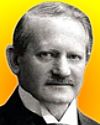
On 18 Jan 1861, Hans Goldschmidt was born, a German chemist who invented the use of Thermite for welding (patented 1895). Thus, he provided a solution at a time when engineers in charge of mining or milling plants located at remote points needed a quick, simple and effectual means of repairing castings or wrought work too heavy for the local forge. If a gear, a heavy shaft, or a connecting rod suddenly developed a flaw, when a duplicate is not on hand, then production would halt until a new part had been brought from a distance, but not if the engineer could use aluminothermics (as Goldschmidt named it). An account of Aluminothermics appeared in Mining Magazine (1904).

On 18 Jan 1908, Jacob Bronowski was born, a Polish-American mathematician who is remembered as the writer and host of the BBC Television series, The Ascent of Man, which presented a humanistic view of science. Today's book pick is: The Ascent of Man, by Jacob Bronowski. The high impact of this book (and of the TV series) is the passion Dr. Bronowski brings to the material, how it's clear he truly believed that it is necessary for everyone to understand how the development of society is the product of generations of people pursuing knowledge—science—and that this understanding is critical to the future of civilization:.the scientific imagination, standing always at the edge of the unknown and unsure, versus absolutism and dogma.
It is available from Amazon, typically about New from $65.32. Used from $1.95. (As of earlier time of writing - subject to change.)
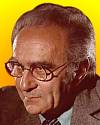 | I grew up to be indifferent to the distinction between literature and science, which in my teens were simply two languages for experience that I learned together. |
| no image | He who wishes to explain Generation must take for his theme the organic body and its constituent parts, and philosophize about them; he must show how these parts originated, and how they came to be in that relation in which they stand to each other. But he who learns to know a thing not only from its phenomena, but also its reasons and causes; and who, therefore, not by the phenomena merely, but by these also, is compelled to say: “The thing must be so, and it cannot be otherwise; it is necessarily of such a character; it must have such qualities; it is impossible for it to possess others”—understands the thing not only historically but truly philosophically, and he has a philosophic knowledge of it. Our own Theory of Generation is to be such a philosphic comprehension of an organic body, a very different one from one merely historical. (1764) |
| no image | A thesis has to be presentable… but don't attach too much importance to it. If you do succeed in the sciences, you will do later on better things and then it will be of little moment. If you don’t succeed in the sciences, it doesn’t matter at all. |
| Before you look at today's web page, see if you can answer some of these questions about the events that happened on this day. Some of the names are very familiar. Others will likely stump you. Tickle your curiosity with these questions, then check your answers on today's web page. | |
| Births | |
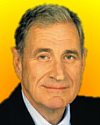 | A physicist and engineer, born 18 Jan 1933, invented a Noise Reduction System known by his name. He is famous for innovations for improving recording sound quality used on high-quality cassettes in car stereos and digital surround sound in movie theaters. As a high school student he went to work part time for Ampex Corporation. While still in college, he joined the small team of Ampex engineers dedicated to inventing the world's first practical video tape recorder. Can you name this scientist? |
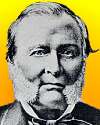 | Joseph Farwell Glidden, born 18 Jan 1813, was an Illinois farmer when he developed the design of a product that would transform the West. It opened the plains to large-scale farming, bringing the era of the cowboy and the round-up to an end. What was this product? |
| Deaths | |
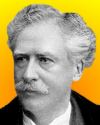 | Herman Snellen (1834-1908) was a Dutch ophthalmologist whose Snellen Chart imprinted with lines of black letters is used for testing visual acuity. This chart soon gained acceptance around the world. What is the Snellen fraction? |
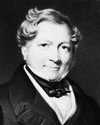 | John Heathcote (1783-1861) as a boy was employed making stockings and thus became familiar with the manufacturing machines. By 1809, he had developed and patented his own machine, capable of intricate, complicated motions and delicate operations which could make a certain product hundreds of times faster than it could be manufactured by hand. What product was made on Heathcote's machines? |
| Events | |
 | On 18 Jan of a certain year, the first live giant panda outside China was brought, by clothing designer Ruth Harkness, to the U.S. from China. Named Su-Lin, the male bear cub arrived in San Francisco, California. In which decade did this panda first come to the U.S.? |
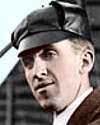 | On 18 Jan 1911, the first landing of an aircraft on a ship took place as pilot. Lt. Eugene B. Ely brought his 50-hp Curtiss pusher biplane in for a safe landing on a 119-ft wooden platform attached the deck of the U.S.S. Pennsylvania in San Francisco Harbor. The ingenious arrangement he devised to arrest his plane upon landing evolved into standard equipment on aircraft carriers. What equipment did Eugen Ely devise to arrest his plane when landing on a ship? |
Fast answers for the previous newsletter for January 17: bifocal eyeglasses • Pluto • dogs • decade including the year 1949 • San Francisco, California, U.S.A..
 If you enjoy this newsletter, the website, or wish to offer encouragement or ideas, please send feedback by using your mail reader Reply button.
If you enjoy this newsletter, the website, or wish to offer encouragement or ideas, please send feedback by using your mail reader Reply button. Your click on a Facebook, StumbleUpon, or other social button on the site webpages is also a welcome sign of appreciation. Thank you for using them.
© This newsletter is copyright 2020 by todayinsci.com. Please respect the Webmaster's wishes and do not put copies online of the Newsletter — or any Today in Science History webpage. (If you already have done so, please remove them. Thank you.) Offline use in education is encouraged such as a printout on a bulletin board, or projected for classroom viewing. Online, descriptive links to our pages are welcomed, as these will provide a reader with the most recent revisions, additions and/or corrections of a webpage. For any other copyright questions, please contact the Webmaster by using your mail reader Reply button.
--
If you do not want to receive any more newsletters, Unsubscribe
To update your preferences and to unsubscribe visit this link
Executive Real Estate Business Class
-
"It was like a man with wings. It wasn't like anything you'd see on TV or in a monster movie." ...
About the publisher
Search This Blog
Blog Archive
-
▼
2021
(585)
-
▼
January
(109)
- Ian Kershaw on why Hitler declared war on America
- On This Day for January 31 - Guy Fawkes executed i...
- Newsletter for Sunday 31 January.
- January 31: Slavery Abolished in the USA, Guy Fawk...
- On This Day for January 30 - “Great Soul” assassin...
- Newsletter for Saturday 30 January.
- January 30: Oliver Cromwell Ritually Executed, Mah...
- On This Day for January 29 - Iraq, Iran, and North...
- Newsletter for Friday 29 January.
- January 29: Romeo and Juliet, Coca-Cola and the Se...
- 'The Food That Built America' Is Back!
- On This Day for January 28 - Explosion of the spac...
- Newsletter for Thursday 28 January.
- Inside The Still-Mysterious Circumstances Of Heath...
- Demystified: What’s the Difference Between a Presi...
- On This Day for January 27 - Vietnam War ended, Wo...
- Newsletter for Wednesday 27 January.
- January 27: Kaiser Bill is Born, the Siege of Leni...
- You are now unsubscribed
- What The Wild West Actually Looked Like in 48 Reve...
- New Savings! $50 off Family Memberships
- On This Day for January 26 - First European settle...
- Newsletter for Tuesday 26 January.
- January 26: Catholic Counter-Reformation, British ...
- On This Day for January 25 - Claudius affirmed as ...
- Newsletter for Monday 25 January.
- January 25: São Paulo Founded, Charles Wilkes Disc...
- Queen Victoria and Prince Albert's marriage | Wors...
- On This Day for January 24 - Opportunity's Mars la...
- Newsletter for Sunday 24 January.
- January 24: Scouting for Boys, Apple's Macintosh a...
- On This Day for January 23 - Madeleine Albright sw...
- See All That's Interesting Most Popular Articles
- Please Confirm Subscription To Our Newsletter
- The "Alaskan Avenger" Who Attacked Sex Offenders W...
- On This Day for January 22 - Roe v. Wade ruling, L...
- Newsletter for Friday 22 January.
- On This Day for January 21 - First commercial Conc...
- Newsletter for Thursday 21 January.
- Need Context with Your News?
- Demystified: Where Do Honeybees Go in the Winter?
- On This Day for January 20 - Barack Obama sworn in...
- Newsletter for Wednesday 20 January.
- On This Day for January 19 - Rule in India transfe...
- Newsletter for Tuesday 19 January.
- On This Day for January 18 - German Empire establi...
- Newsletter for Monday 18 January.
- January 18: King of Siam Kills the Crown Prince of...
- Queen Victoria and Prince Albert: was their union ...
- On This Day for January 17 - Hawaiian monarchy ove...
- Newsletter for Sunday 17 January.
- January 17: US-Modoc War, the UN Security Council ...
- On This Day for January 16 - Beginning of Persian ...
- Newsletter for Saturday 16 January.
- January 16: Ivan the Terrible, Louis XVI's Death S...
- The Tragedy Of David Reimer, The Boy Forced To Liv...
- On This Day for January 15 - British Museum opened...
- Newsletter for Friday 15 January.
- January 15: Henry VIII and the Church of England, ...
- On This Day for January 14 - Premiere of Giacomo P...
- Newsletter for Thursday 14 January.
- January 14: The Dutch Conquer Malacca, the US Revo...
- Demystified: Why Does Water Freeze from the Top Down?
- On This Day for January 13 - Émile Zola's “J'accus...
- Newsletter for Wednesday 13 January.
- January 13: 1st Issue of "The Times" of London, Ch...
- On This Day for January 12 - Haiti severely damage...
- Newsletter for Tuesday 12 January.
- January 12: A Day of Coronation, Gandhi's Last Fas...
- On This Day for January 11 - Amelia Earhart's Hawa...
- Newsletter for Monday 11 January.
- January 11: Spices, Morse Code, Insulin and 55 Yea...
- The real history behind Bridgerton
- On This Day for January 10 - Common Sense publishe...
- Newsletter for Sunday 10 January.
- January 10: Thomas Paine Publishes Common Sense, T...
- On This Day for January 9 - Election of Mahmoud Ab...
- THE IGBO LANDING - HOW THEY COMMITTED SUICIDE
- Newsletter for Saturday 9 January.
- January 9: Joan of Arc's Trial, the Daguerreotype ...
- The Biggest Historical Discoveries From 2020 And M...
- On This Day for January 8 - Anniversary of Grimald...
- Newsletter for Friday 8 January.
- January 8: US National Debt Briefly Hits $0, Forma...
- On This Day for January 7 - Galileo's discovery of...
- Newsletter for Thursday 7 January.
- January 7: A Day of Invention - The Typewriter, Hy...
- On This Day for January 6 - Epiphany, Richard II i...
- Newsletter for Wednesday 6 January.
- January 6: Charles I put on Trial for Treason, FDR...
- Meet The Real-Life Goodfellas Whose True Stories W...
- On This Day for January 5 - Golden Gate Bridge con...
- Newsletter for Tuesday 5 January.
- January 5: Richmond Burns, The Nazi Party Forms, A...
- Last Call for 30% off Memberships
- On This Day for January 4 - Burma granted independ...
- Newsletter for Monday 4 January.
- January 4: The Colt Revolver, a 33 Year Strike and...
- Dangers of Victorian London| Roman history quiz | ...
- On This Day for January 3 - Martin Luther excommun...
-
▼
January
(109)
-
Blogroll
-
About
HistoryFact










0 comments:
Post a Comment